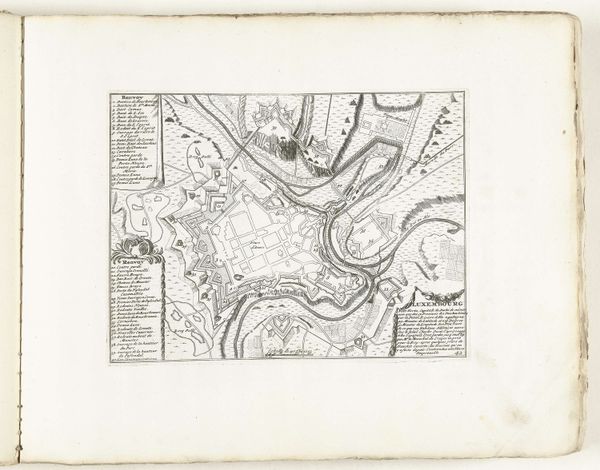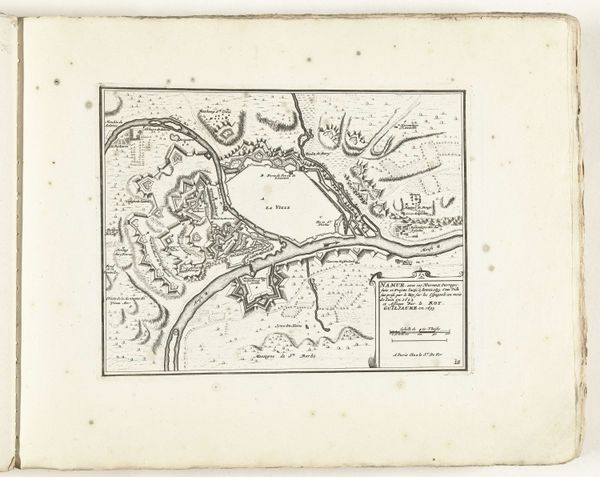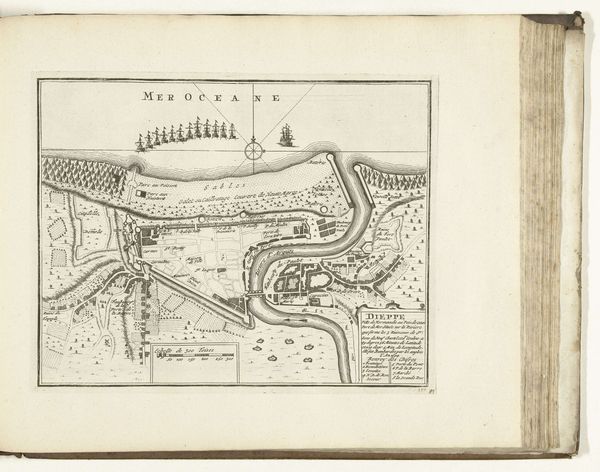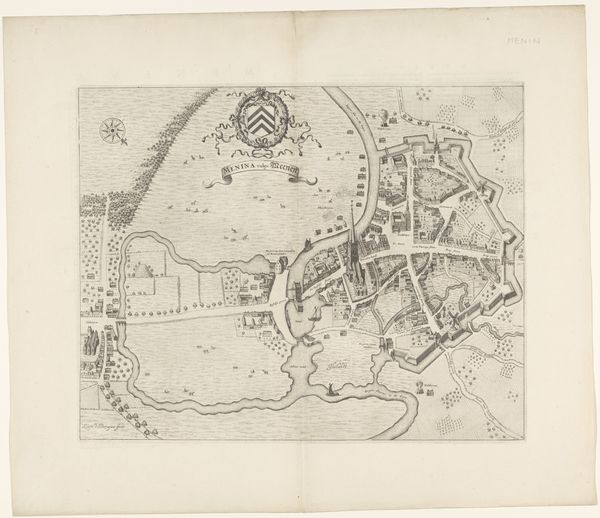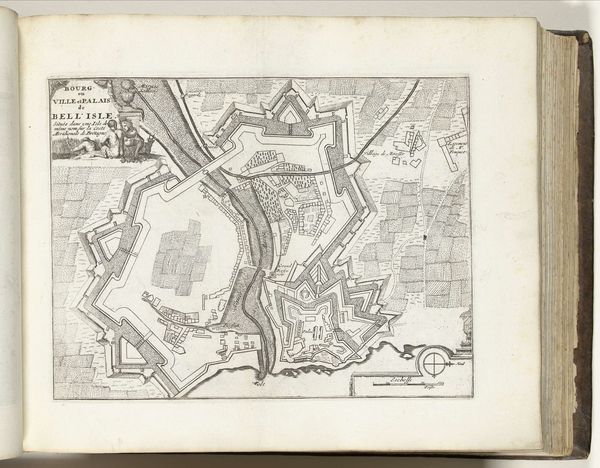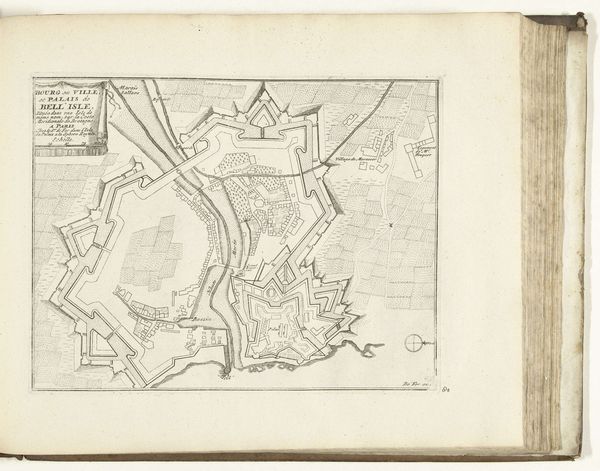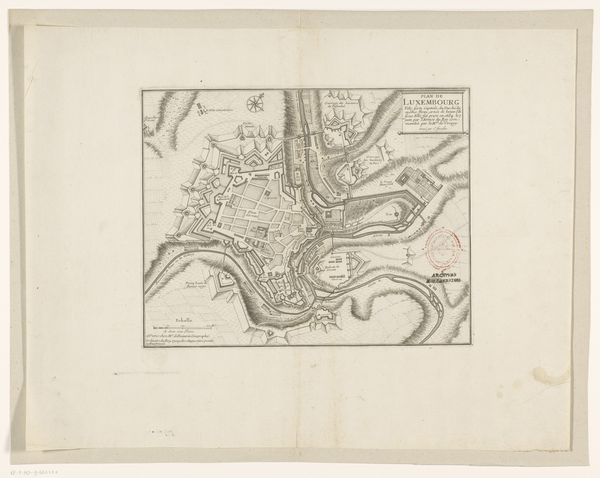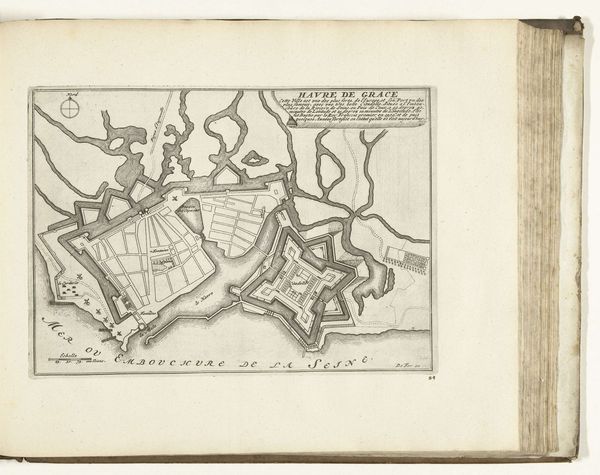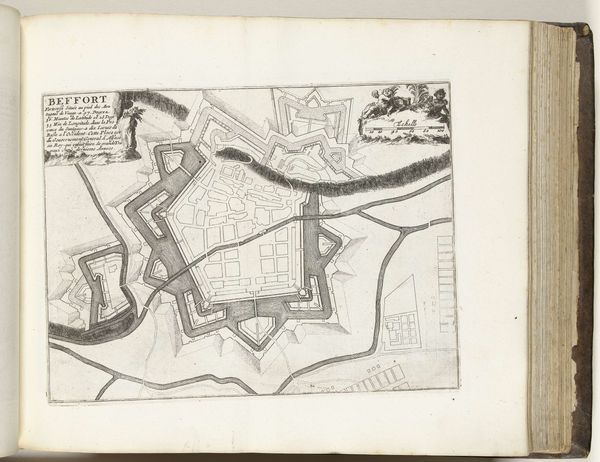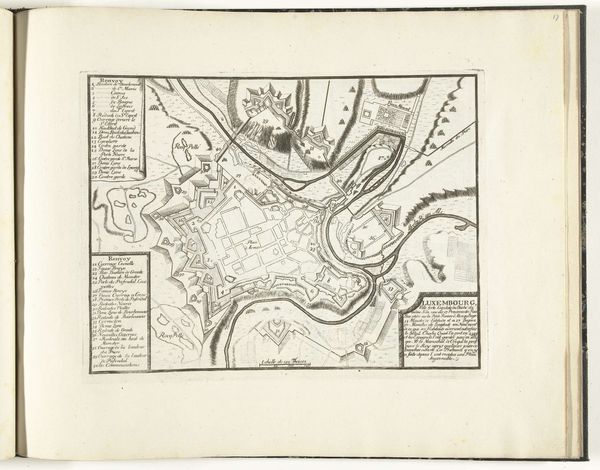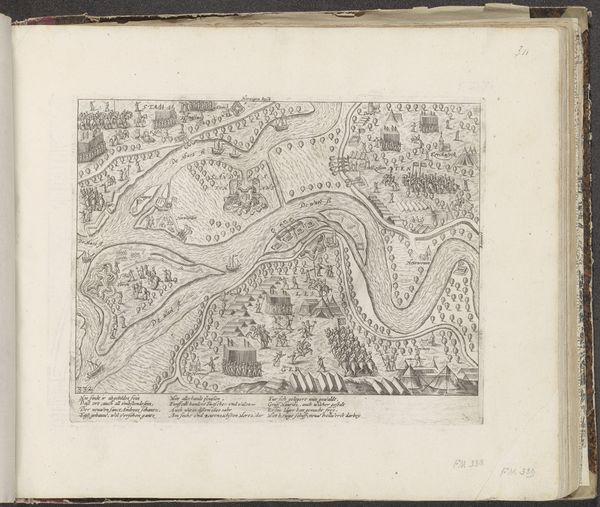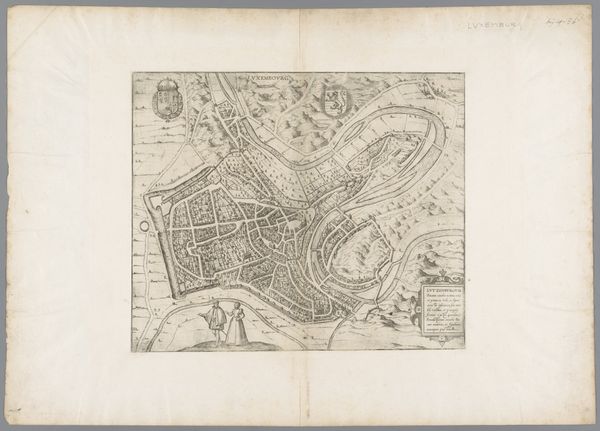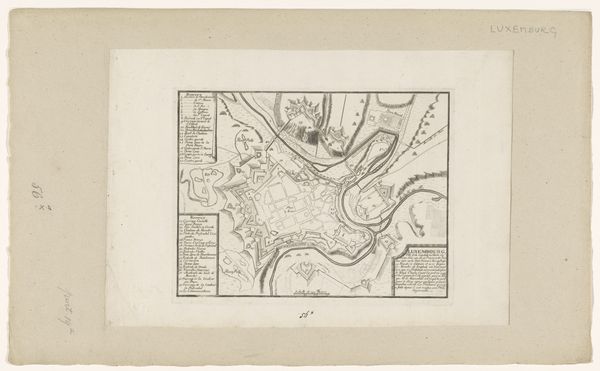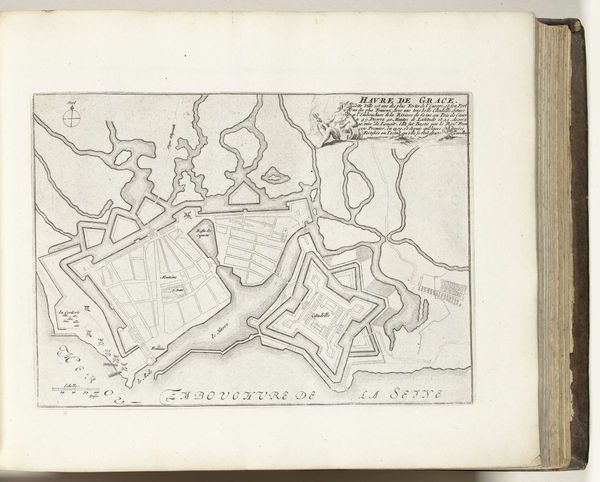
drawing, ink, engraving
#
drawing
#
aged paper
#
toned paper
#
baroque
#
pen sketch
#
sketch book
#
personal sketchbook
#
ink
#
pen-ink sketch
#
pen and pencil
#
pen work
#
sketchbook drawing
#
cityscape
#
sketchbook art
#
engraving
Dimensions: height 205 mm, width 274 mm
Copyright: Rijks Museum: Open Domain
Curator: Looking at this meticulously crafted drawing, I find myself drawn into its intricacy, its graphic qualities. Editor: Immediately, I’m struck by the evident labor embedded within each of these fine lines etched onto what looks to be aged paper. What are we viewing exactly? Curator: This is “Plattegrond van Luxemburg,” a detailed map of Luxembourg dating back to the late 17th century. The anonymous artist utilized ink and engraving techniques to depict the city and its fortifications. You can find it at the Rijksmuseum. Editor: Fortifications – that speaks to a time of conflict and control. This wasn’t just a geographical representation; it was a tool, a product of military engineering meant to exert dominance over a landscape and its inhabitants. One has to wonder who made the paper, drew it, engraved it. What were the material conditions that produced such detail? Curator: Undoubtedly, the precise rendering of spatial relationships demonstrates a clear attempt at objective representation, one underpinned by rational principles that define Baroque cartography. Note the geometric precision in outlining buildings and defenses. Observe how the various elements resolve into a cohesive and balanced whole, revealing a unified design strategy. Editor: Balance for whom? This precision had real-world impacts tied directly to power dynamics. This map’s very creation required resources, expertise, and systems of labor rooted in hierarchy and subjugation. Its aesthetic qualities are secondary to its inherent function in facilitating territorial and societal control. The question arises, what kind of inks and paper was used? Who supplied those goods, and under what conditions were these materials accessed? Curator: One cannot deny its formal beauty though. Consider the contrasts of light and shadow achieved solely through linear hatching. Editor: The question of utility haunts this thing for me, to look at it just as a pretty set of hatched lines abstracts it of it purpose and, indeed, historical violence. Curator: I concede it's a multi-layered image—formal and political at once, both beautiful and utilitarian. Editor: Right, and understanding how those two dimensions are inseparable, that seems key to me here.
Comments
No comments
Be the first to comment and join the conversation on the ultimate creative platform.
